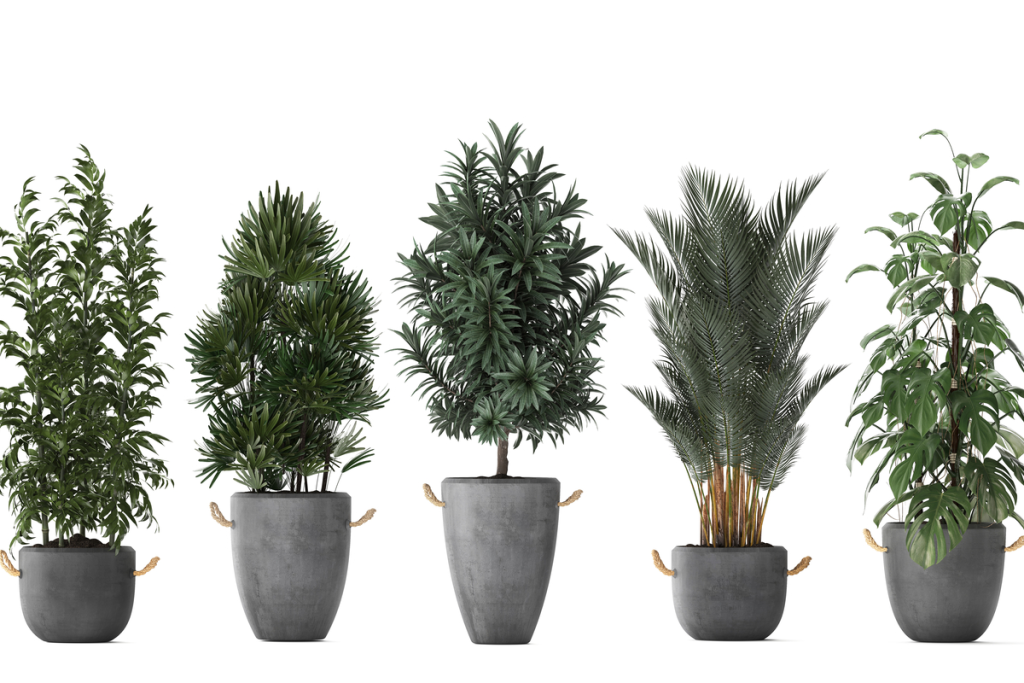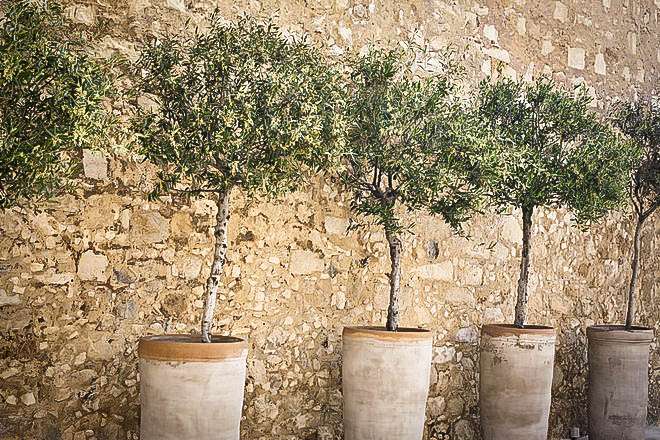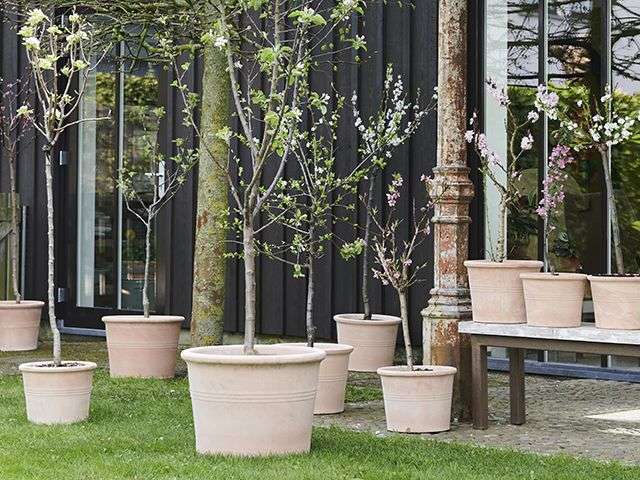This article may be of interest to you if you enjoy caring for plants and picking out lovely potted plants by hand. Low-light plants, radar-free houseplants, status plants, pet-safe plants, and other topics have all been covered in our writing about tree pots. There is a ton more. The proper plant can significantly contribute to the transformation of a room, but it won’t work if you keep it in a plastic planter, of which many are available in shops. plant nursery, or if you order your plants online, have them delivered right to your house.

It is a squandered opportunity to leave plants in those plastic pots rather than a catastrophe. A straightforward ceramic vase may transform that large bird of paradise or monstera into a meaningful addition to your living room decor rather than something that just rushed out of Ikea. And you’ll definitely want to display a rare or exotic plant in style if you happen to get one, like one compared to a Hermès purse.
You can place your tree pots plants in the plastic pot right away if you’re anxious about repotting. Just choose a little larger ornamental pot and insert the plastic pot as a lining. (Eventually, once it has grown sufficiently, you’ll need to repot it; however, we can worry about that later.) Furthermore, since you can water without worrying, this makes it simpler. You may quickly complete anything in the pot without worrying about the drainage. If you desire, sink.
All you need is the appropriate pot or planter to enhance your indoor plants (and your decor). With stands for the crown jewel of your botanical collection, hanging planters, outdoor planters, and vases, potted plants are available in vibrant and patterned alternatives that complement home workstations, coffee tables, and end tables.
Tree pots and your favorite plants can be used to create a green area indoors or outdoors. Choose the proper planter size for your plants. Whether you want to modernize your front porch, backyard, or garden, pick planters made of a material that goes with your style. Various terracotta, ceramic, cement, and plastic pots are available. Plastic planters are portable and lightweight. With hanging planters that keep the floor clear, you can freshen up nooks both indoors and outside.
Succulents or terrariums are miniature indoor plants that you may use to add green touches to your tabletop. Drain holes are crucial since they aid in the removal of extra water and keep the plant from drowning. To prevent dirt and water stains on your floor, put a saucer under the potted plant. For anyone new to gardening, self-watering containers are a fantastic option.
A option you should consider are ceramic tree pots!
A ceramic planter is an excellent option if you’re searching for a tree pot that can house your favorite plants while also adding decoration. Ceramic tree pots are always appropriate for home and outdoor decorations.

Why is ceramic suitable for tree pots?
Inorganic and nonmetallic materials that are crucial to our daily lives include ceramics. The procedure by which these items can be produced, as well as new varieties of ceramic products and a variety of applications for ceramic products in daily life, are all designed by ceramic and materials engineers.
There is ceramic all around us. Things like tile, bricks, plates, glass, and toilets are included in this category of materials. Quartz tuning forks, which serve as watches’ timekeepers, piezoelectric ceramics, which become stressed when a voltage is applied, phone lines, spark plugs, and ceramic engine parts for race cars are just a few examples of items that use ceramics. In addition, you can find them on airplanes, appliances (with enamel coatings), and space shuttles (nose cones).

Ceramics can be either heavy or light, depending on the process used to create them. They often exhibit good strength and hardness qualities, however they are frequently fragile in nature. Ceramics can also be shaped to act as insulators, which block the flow of electricity, or as electrically conductive materials, which are objects allowing electricity to pass through their bulk. Superconductors and other ceramics exhibit magnetic characteristics as well.
Clay, earthy materials, powders, and water combinations are typically shaped into the desired shapes to create ceramics tree pots. After the pottery has been formed, it is burnt in a kiln, a high-temperature oven. Ceramics are frequently covered in glazes, which are beautiful, weatherproof paint-like materials.
Pottery and traditional ceramics for tree pots
One of the earliest human technologies is pottery. Recent clay pottery finds in China’s Hunan Province have been carbon dated to be between 17,500 and 18,300 years old.
On clay, traditional pottery are made. Earthenware, stoneware, and porcelain pottery are the types of pottery displayed here. The type of additives employed, the firing temperatures, and the composition of the clays used all affect the final product’s character.
Earthenware, stoneware, and porcelain are the three main categories of pottery.
Earthenware
Pottery that has not undergone vitrification, or the bonding of crystalline silicate compounds into noncrystalline glass compounds, is referred to as earthenware. The ceramic becomes rougher and more porous as a result. Earthenware Up until the 18th century, pottery dominated the ceramics industry. One popular kind of earthenware is terracotta, a pottery made of clay without a glaze. Terracotta planters are a common sight nowadays, along with bricks, water pipes, and other items.
Tableware and decorative items made of clay frequently employ earthenware. One of the earliest ingredients in pottery is this one.

At relatively modest temperatures (1,000–1,150°C), the clay is burnt, resulting in a coarse, slightly porous end product. The heated piece is covered in a glaze made of finely powdered glass powder suspended in water before being fired again to overcome its porosity. Examples of earthenware include majolica, Delft, and faience.
Stoneware
Stoneware is a vitreous or semi-vitreous ceramic, which means that it has an enamel coating that gives it a glassy appearance and renders it nonporous. Compared to other ceramics, stoneware is burned at a high temperature. Due to imperfections in the clay, it usually has an earth tone color and is usually glazed.
About 1,200°C is used to heat stoneware clay until it resembles glass (vitrified). Stoneware is non-porous, thus glaze is only used for aesthetic purposes. For use in the kitchen for cooking, baking, storing liquids, and serving utensils, it is a solid, chip-resistant, and long-lasting substance.
Porcelain
Materials, typically kaolin clay, are heated to temperatures between 2,200 and 2,600 degrees Fahrenheit in a kiln to create porcelain ceramics. Comparatively speaking to other varieties of ceramics, porcelain is a particularly strong and heat-resistant substance. This occurs as a result of the silicate mineral mullite being formed during the vitrification process and being burned. Bathroom and kitchen tiles, dishes, decorative sculptures, and other items are typical porcelain ceramic tree pots products.
A exceedingly tough, translucent white ceramic, porcelain is porcelain. Around 1600 BC, China produced the earliest types of porcelain, and by 600 AD, Arabian traders were highly esteemed Chinese porcelain. Porcelain is frequently referred to as “fine china” since it was historically connected with China and was frequently used to create plates, cups, vases, and other works of art.
Small quantities of glass, granite, and feldspar minerals are combined with fine white kaolin clay to create porcelain. The resulting fine white powder is then given water so that it can be kneaded and formed. This is heated to a temperature of 1,200–1,450 °C in a kiln. The next step is to apply decorative glazes, followed by another firing.

China bone
A form of porcelain notable for its translucency, high strength, and resistance to chips is known as bone china, commonly referred to as fine china. Around 1800, English ceramicist Josiah Spode invented this substance, which is composed of a mixture of kaolin, feldspar, and bone ash. Bone china ceramics may be sculpted into narrower forms than porcelain since it is such a sturdy material. It is vitrified, but because the mineral characteristics are different, it appears translucent.
Clay, feldspar minerals, and fine silica sand are combined to create bone china, which is stronger, harder to chip, and easier to construct than porcelain always infuses your house with peace, grace, and elegance.
Because of the properties as well as the properties of the ceramic, it is suitable to choose for a potted plant. So ceramic tree pots are not a bad choice in your garden pot collection.
Marina Nguyen
